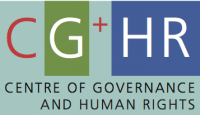
Why Strengthening the Rule of Law Matters in Transitional Justice: Lessons from Colombia
Since the end of the Cold War, Transitional Justice (TJ) has become the dominant framework informing peacebuilding when wars end. Each year, countries establish TJ systems to come to terms with a violent past. However, TJ rarely lives up to its promises. Criticism of TJ often focuses on its (in)ability to heal the wounds of violence, foster forgiveness and reconciliation in divided societies, or deliver restorative justice for both the victims and victimisers of a conflict. In this piece, I shed light on an often-overlooked limitation of TJ: its disregard for the Rule of Law (RoL). RoL, understood as a principle of governance by which law governs societies, is often seen to belong outside the remit of TJ. This is …

The 2025 Communicator: The Future of Digital Communications and Humanitarian Response
With communication a central element in humanitarian crises and humanitarian response, the next decade will see communicators change their approach in light of the increased significance of digital communications in such situations.
Digital trends include real-time mapping and analysis using social media, crowd sourcing and data mining, the use of mobile phones to disseminate information, online campaigns bringing publics and affected populations closer together, digital platforms for cash transfers and new digital tools for assessment work, as well as monitoring and evaluation. These changes have brought new actors not traditionally associated with humanitarian situations onto the scene: technologists, data analysts, social innovators, private sector businesses and financial intermediaries, among others.Yet to understand the full significance of these trends, we must dig deeper. There is a fundamental change underway in the underlying drivers of humanitarian crisis and of humanitarian response that will become a reality in 2025 if we consider that an essential condition that defines a ‘humanitarian situation’ is a communications crisis. This holds on two critical levels.









